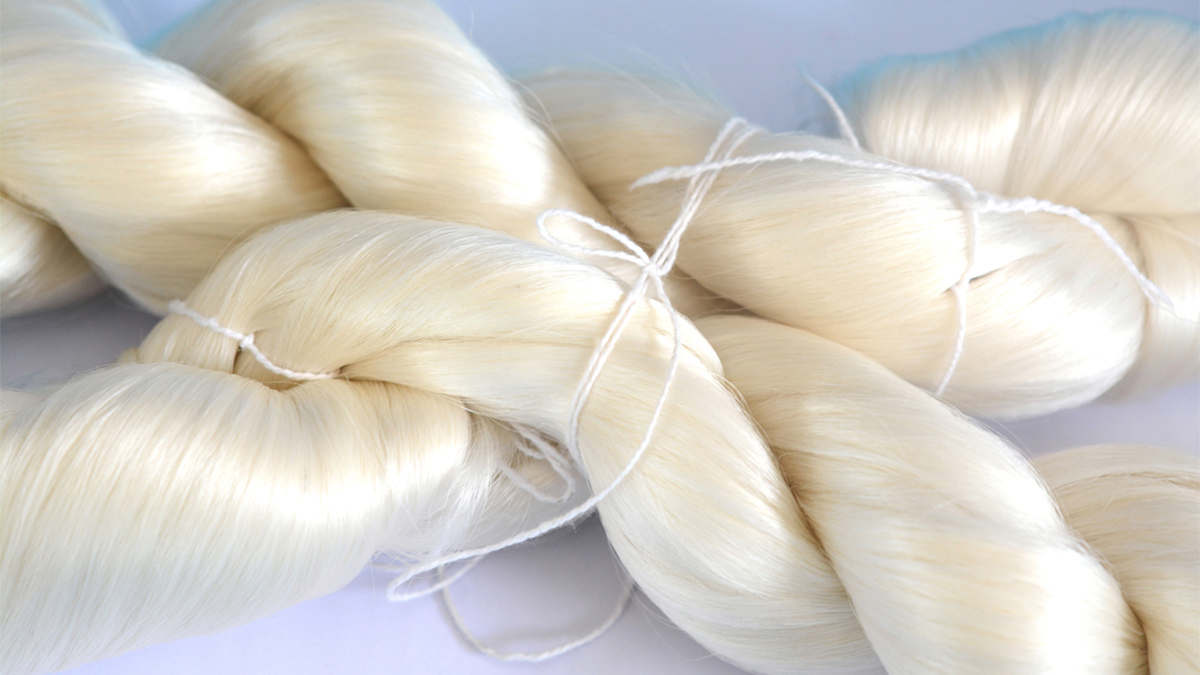The story of Uster Technologies, world-renowned for quality management in conventional spinning, also includes an important page on silk. Peter Haettenschwiler has a special and intense interest in silk and has become a recognized expert on bagworm moths over time, he first described and named more than 30 new species. in addition to his contributions to the company in this field. Uster shared the intriguing story of Haettenschwiler, who passed away on August 17, 2021 to honour the life and work of a true silk expert.
Uster Technologies’ first textile technologist
Uster Technologies made a significant breakthrough by introducing the first yarn evenness tester to the market in 1948. Peter Haettenschwiler was involved as an assistant in the development of the tester and subsequently in showing the diagrams and test results to the spinners. In fact, Haettenschwiler was Uster’s first textile technologist in this role, bringing quality management to factories where diagrams are seen as aids to accurate pricing, improved quality and forecasting how the yarns would suit processing stages.
In addition, Haettenschwiler had a very special hobby of collecting bag moths and butterflies. His knowledge and dedication to this subject allowed him to assemble the world’s largest collection of moths of the family known as bagworm moths, today housed in the Entomological Collection of ETH Zurich, Switzerland. Having become a recognized expert on this species, Haettenschwiler first described and named more than 30 new varieties not previously recorded. Haettenschwiler has also edited numerous specialist literature, enhancing his name and reputation among international experts in the field of Lepidoptera.
The journey of the silk testing
Silk is often described as the queen of all textile fibres’ and a natural wonder, so the quality parameters of spun silk fibres also attract a lot of attention. Haettenschwiler tested spun silk yarn, but several years passed in the manufacturing of raw and spun silk until the first trials were made with commercially available testing systems. Cooperation was started with experts from silk institutes in Switzerland, Italy and later in China during this work.
The European silk trade was the first to hear about the new test technologies. While early studies quickly showed that even very fine silk could be tested by these devices after certain adaptations; Test results were more neutral, more meaningful, and more precise than data obtained with traditional testing methods. Subsequently, certificates were issued according to the test results and these were used to determine the commercial value of the products. While the accuracy of test results is of particular importance for both trade and downstream processes, so attention was closely focused on optimizing the testing methods.

Haettenschwiler also played an important role in the development of Uster Statistics
At the beginning of the 18th century, the ‘silk courts’ in Zurich were world-famous and by 1900 the silk industry was one of the most important industries in Switzerland. While silk processing reached its peak at the beginning of the 20th century, what remains today are a handful of silk producers focusing on niche markets, as well as Testex, founded as `Zuerich Seidentrocknungsanstalt´ (institution for silk drying) 175 years ago and the financial institutes which arose to provide capital to support the industry’s profits. While silk was never a big business for Uster, it was just a niche area where Haettenschwiler showed his passion. In the Uster Statistics editions for both silk and raw silk, Haettenschwiler played an important role in the development of Uster Statistics in its early years and over the decades.
“We should inspire future generations of textile professionals with his story”
Uster Technologies AG Senior Textile Technologist Wolfram Soell stated that they want to honour Haettenschwiler’s working life and said; “We should inspire future generations of textile professionals with his story”. Soell noted that he was a formative personality for the company and a highly engaged colleague who dedicated his working life to the textile industry with respect to advanced quality management in staple and filament spinning. Relaying that silk was one of his greatest passions, Soell said; “The development of possible objective quality testing possibilities with Uster products was always his intention and he was always pushing for investigations and publications”.


